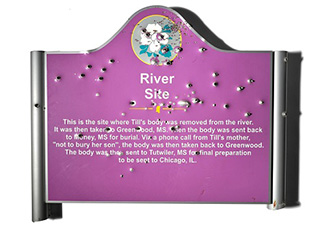
by Aziah Siid
Kraft Lunchables, the prepackaged mini-meals that fed generations of children — and some adults — are a popular, convenient option for schools feeding students from low-income families.
But the familiar yellow packages could disappear from free-and-reduced lunch options after the advocacy group Consumer Reports found Lunchables meals contain abnormally high levels of sodium and lead. The group is urging the Department of Agriculture to remove the Kraft Heinz cheese-crackers-and-lunch meat product from schools.
“Lunchables are not a healthy option for kids and shouldn’t be allowed on the menu as part of the National School Lunch Program,” said Brian Ronholm, director of food policy at Consumer Reports, which launched a petition to the USDA.
But Kraft Heinz insists Lunchables are safe and should remain on the National School Lunch Program menu.
“All our foods meet strict safety standards that we happily feed to our own families,” Lynsey Elve, a Kraft Heinz representative, told The Washington Post. “Lead and cadmium occur naturally in the environment and may be present in low levels in food products. We are proud of Lunchables and stand by the quality and integrity that goes into making them.”
Elevated levels of lead have been linked to developmental problems in children, while sodium increases the risk of elevated blood pressure, a concern even among young people.
Last month, Consumer Reports tested the Kraft Heinz lunch kits, which debuted in 1988, and compared them to similar snack kits from other manufacturers like Armour and Oscar Mayer. Their findings caused alarm: levels of lead and sodium that could be harmful to children.
None of the 12 Lunchables kits exceeded the regulatory level of limits of lead or sodium, but five of the products would expose someone to 50% or more of California’s maximum allowable amount of lead or cadmium heavy metals, which can cause serious health problems in children, the report found.
For example, Turkey and Cheddar Cracker Stackers, a 3.2-ounce Lunchables, contained 74% of California’s level allowed for lead, and 49% of the daily recommended amount of sodium for 4- to 8-year-olds. Similar products from Greenfield Natural Meat and others tested by CR were found to contain much lower amounts of both lead and sodium.
Researchers looked for other heavy metals including phthalates – chemicals used to make plastic more flexible and durable, but which could leach into food during the manufacturing process. Phthalates are increasingly linked to health concerns.
Although Lunchables haven’t been banned or recalled from store shelves, the Consumer Reports tests are cause for concern amongst low-income parents of Black students, a disproportionate number of whom rely on free or reduced lunches.
Aaccording to data from the Center for Disease Control and Prevention, in 2021, 51.6% of all schoolchildren aged 5 to 17 received free or reduced lunch, but 66.2% of Black or African American children were more likely to receive reduced-cost meals compared to their white counterparts. That disparity increases the likelihood they will be exposed to possible health risks from Lunchables simply by being on the free or reduced-lunch list.
Since the Consumer Reports analysis was published, a parent filed a lawsuit in the country’s largest school district alleging the convenient snack has harmful amounts of lead, and accuses Heinz of failing to inform consumers about the presence of lead in the products.















